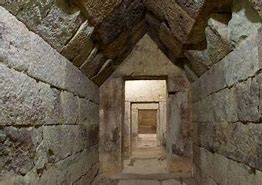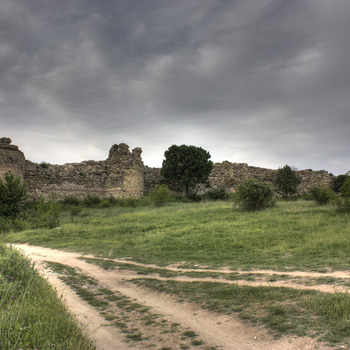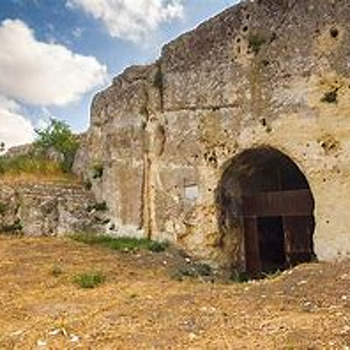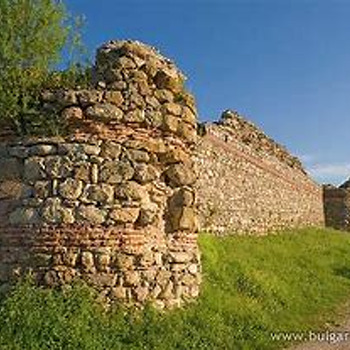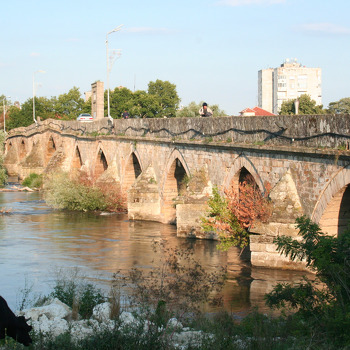Thracian domed tomb in Mezek
Overview
The tomb in Mezek is a Thracian domed tomb of the Mycenaean type dating from the 4th - 3rd century BC. It is located on the outskirts of the village of Mezek, Svilengrad municipality, in the mound "Meltepe". This is one of the largest Thracian tombs in Bulgaria.
The tomb is located east of the village of Mezek. It can be reached by road, which separates before entering the village. Visits to the tomb are organized through the Mezek Information Center. Below Sheynovets Peak is another Thracian domed tomb. Its vestibule is small and almost destroyed, the domed room is preserved, but the flooring is completely broken by treasure hunters.
In the embankment of the mound in 1908 a peasant found a bronze sculpture of a wild boar in life size weighing 177 kg. The find is now housed in the Archaeological Museum in Istanbul, Turkey, as in 1908 the area was still within Turkey's borders. In the museum in Haskovo there is a plaster cast of the original.
The tomb was discovered by chance by locals in 1931. It was studied by Professor Bogdan Filov - a prominent Bulgarian archaeologist and politician, Prime Minister of Bulgaria in two governments in the period 1940 - 1943. It was declared a cultural monument in issue 67 of the State Gazette by 1968
The tomb at Mezek is the largest and one of the most interesting and impressive domed tombs of the Mycenaean type in Thrace. It is preserved entirely in its original form. The outside is covered with an impressive mound with a height of 14 - 15 m and a diameter of 90 m at the base. It is built of carved stone blocks connected in places with iron brackets. The tomb is entered through a corridor (dromos) with a length of 20.65 m, a width of 1.55 m and an average height of 2.50 m. There are two rectangular vestibules (with a triangular vault - like that of the dromos). From the corridor one enters one another into rectangular vestibules, and after them into a round burial chamber - a tolos in the shape of a beehive. The room has a diameter of 3.30 m and a height to the top of the dome - 4.30 m, and there is a stone sarcophagus and two stone troughs (urns).
A large number of objects made of gold, bronze, iron, glass and ceramics were found in the tomb, which are exhibited in the museums in Sofia and Haskovo. Among them are gold jewelry, earrings, an iron breastplate, silver, gold, bronze and clay vessels, a bronze candelabrum (large three-legged candlestick with lamps), 134 cm high, decorated with a large statuette of a dancing satyr. It is believed that the tomb was used as a temple to Heroon - a place where the cult of the divine deceased was worshiped through certain religious rituals. It was used many times and most probably served as a family tomb of a Thracian aristocrat. Traces of six burials have been found.
Recommended
- The bridge of Mustafa Pasha
- Mezek tomb
- Mezek fortress
- Stone bridge - Biserska river
- Bakarlia Protected Area


 Bulgarian
Bulgarian Romanian
Romanian